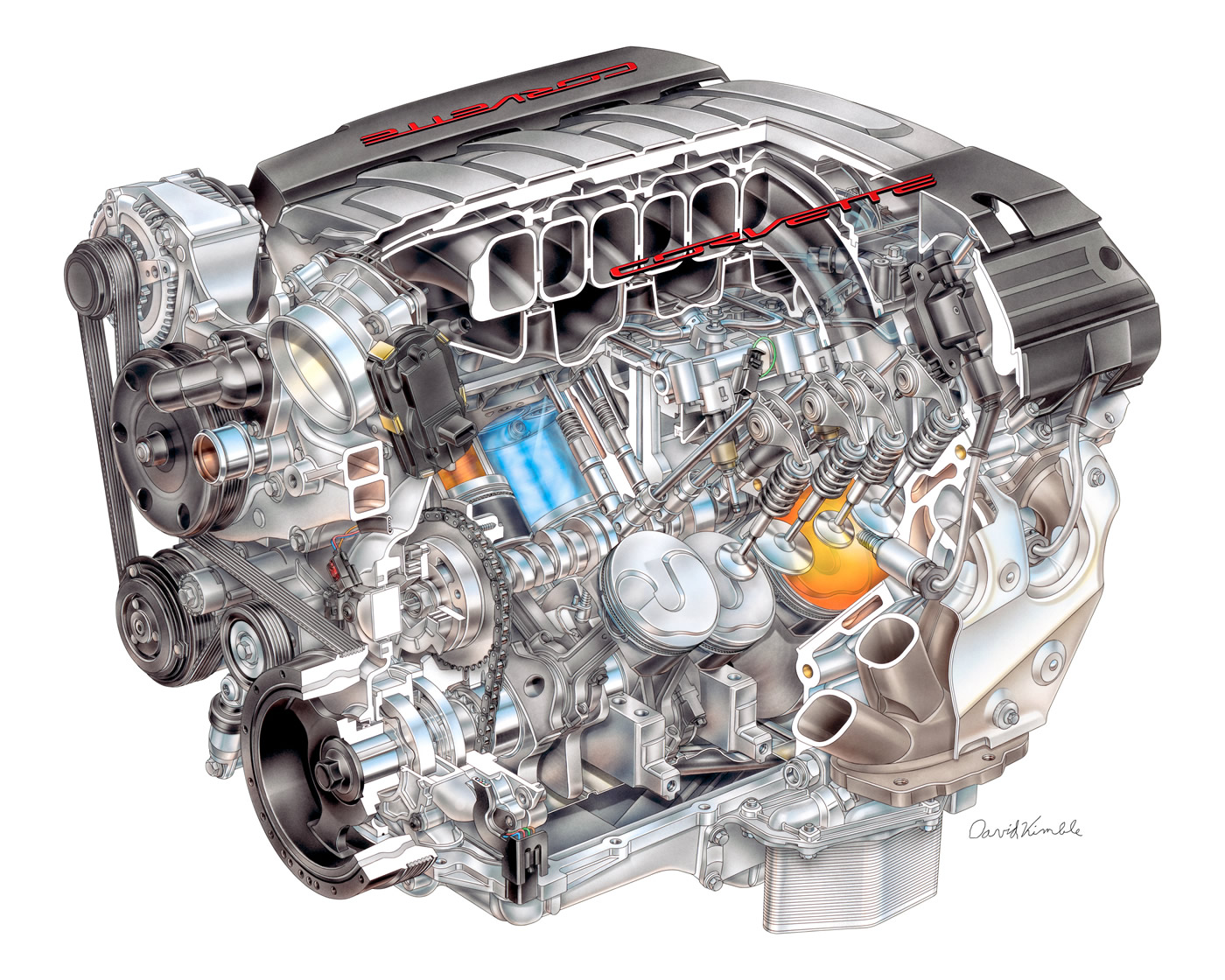2014 C7 Corvette LT1 Fact Sheet #3 - Gen 5 Small Block V-8 Durability and Validation
Source: GM Media
The Gen 5 Small Block was subjected to the toughest durability testing ever for a V-8 engine from General Motors. It included millions of hours of computational analysis that perfected the design of everything from the design of the combustion system to the shape of the connecting rods, to thousands of hours of physical testing.
Once the Gen 5's basic design was refined on the computer, physical properties were constructed and tested on a variety of dynamometers – including a unique tilt-stand fixture that tilted the engine to simulate the load experienced in the Corvette during high-speed cornering on a racetrack. It can tilt up to 53 degrees and simulate lateral acceleration of up to 1.3g.
The toughest test session on the Corvette's LT1 Gen 5 engine was a grueling, GM-proprietary performance durability procedure, where it was subjected to a high-speed/high-load torture session that simulated full-throttle blasts from the equivalent of 0 to 120 mph. With simulated transmission shift points inserted during the high-load test, the engine cycles non-stop between peak torque and peak horsepower for hundreds of hours – the equivalent of thousands of miles.
Testing on the Gen 5 Small Block began in late 2010. Additional procedures included:
- Severe thermal cycle testing, which quickly cycles the engine between extreme cold and hot coolant temperatures to validate the durability of engine components such as the head gaskets, exhaust manifolds and more. The coolant temperatures ran up to 239 F (115 C).
- The "hot scuff" test, in which a brand-new engine – or "green" engine to the engineers – was run at wide-open throttle with no break-in period, which helped test bearings, piston ring sealing, bore scuffing and more.
- Active Fuel Management validation, which cycled the engine in and out of the cylinder-deactivating feature hundreds of thousands of times at a variety of engine speeds to ensure the performance and durability of its unique valve lifters.
- 24-hour racetrack equivalency testing to validate the performance of the available dry-sump oiling system.
And while the computational analysis indeed provided engineers with test engines that were very close to the mark, the physical testing revealed real-world variances that the perfection of a computer model couldn't anticipate. As a result, the specifications for some of the Gen 5's bearings and intake valves were revised, along with the cam phasing of the continuously variable valve timing system.
All of the testing was performed at GM's state-of-the-art Powertrain Engineering Center in Pontiac, Mich. The 450,000-square-foot facility is one of the industry's largest and most advanced powertrain development centers. It contains 120 test cells and energy generated by the engines running on the dynamometers is recaptured and used to provide approximately 15 percent of the center's electricity.
# # #
 |
